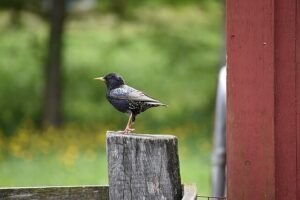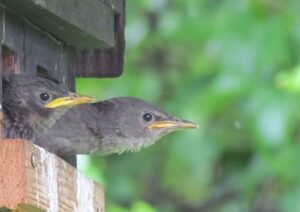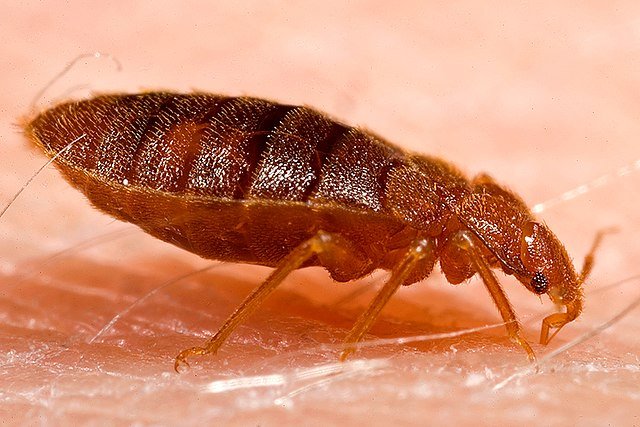European Starlings (Sturnus vulgaris): Identification, Behavior & Control
 The European Starlings (Sturnus vulgaris), also known simply as the common starling, is one of the most abundant and widespread birds in the world. Originally native to Europe, Asia, and parts of North Africa, these birds were deliberately introduced to North America, Australia, New Zealand, and South Africa, where they have since flourished. Today, their global numbers are estimated in the hundreds of millions.
The European Starlings (Sturnus vulgaris), also known simply as the common starling, is one of the most abundant and widespread birds in the world. Originally native to Europe, Asia, and parts of North Africa, these birds were deliberately introduced to North America, Australia, New Zealand, and South Africa, where they have since flourished. Today, their global numbers are estimated in the hundreds of millions.
While admired by some for their glossy plumage and synchronized aerial displays (murmurations), European starlings are widely regarded as pest birds. Their aggressive nesting behavior, droppings, and crop damage cause significant problems in both rural and urban environments. They compete with native species, transmit pathogens, and cause millions of dollars in agricultural losses annually.
This guide provides a comprehensive look at the European Starling, covering its identification, ecology, distribution, risks, control methods, and cultural context. It also compares starlings to other urban pests such as Pigeons (Columba livia), House Sparrows (Passer domesticus), and smaller insect pests like Fruit flies (Drosophila spp.) and Blow flies (Calliphoridae) that often thrive in similar human-altered environments.
Identification
Size: 19–23 cm long, wingspan 31–44 cm, weight 60–100 g.
Plumage: Glossy black with iridescent purple and green tones in spring. In winter, feathers are spotted with white.
Bill: Yellow in breeding season, dark gray in winter.
Legs: Reddish-pink.
Flight pattern: Fast, direct, with rapid wingbeats.
Vocalizations: Extremely versatile; starlings mimic other bird calls, mechanical noises, and even human sounds.
Field distinction is important since starlings are often confused with blackbirds or grackles. Unlike these species, starlings have triangular wings, shorter tails, and pointed bills.
Biology and Ecology
 European starlings are highly adaptable omnivores:
European starlings are highly adaptable omnivores:
Diet: Insects, spiders, earthworms, berries, seeds, and grains. They especially target agricultural crops like grapes, cherries, and grains. Insects consumed include beetles (Coleoptera), caterpillars (Lepidoptera larvae), and flies such as Fruit flies (Drosophila spp.).
Breeding: Starlings are cavity nesters, using holes in trees, buildings, vents, or nest boxes. Females lay 4–6 eggs per clutch, with 2–3 broods annually.
Parental care: Both sexes share feeding duties. Chicks fledge in about 3 weeks.
Behavior: Starlings are highly social, forming enormous flocks outside the breeding season. Their murmurations can number hundreds of thousands of birds.
A key ecological note: starlings often displace native cavity-nesting birds like bluebirds and woodpeckers, leading to biodiversity impacts.
Global Distribution
Native range: Europe, Asia, North Africa.
Introduced regions: North America (since 1890), Australia, New Zealand, South Africa, Argentina.
Urban presence: Common in cities, suburbs, and farmland worldwide.
Migratory patterns: Northern populations migrate south in winter; southern populations are mostly resident.
In the U.S., they are one of the most abundant birds, with populations exceeding 200 million. Their spread from just 100 individuals released in New York’s Central Park is one of the most famous cases of invasive species expansion.
Risks and Damage
European starlings cause multiple forms of economic and environmental harm:
Agricultural losses:
Consume and contaminate crops such as grapes, cherries, olives, and cereal grains.
Feed in large flocks, causing extensive damage within hours.
Livestock operations:
Invade feedlots and poultry houses, eating livestock feed.
Spread parasites and pathogens to animals.
Urban damage:
Droppings corrode metal, stone, and painted surfaces.
Noise from large flocks is disruptive in cities.
Disease risks:
Droppings can harbor fungi like Histoplasma capsulatum (histoplasmosis).
Known carriers of Salmonella and E. coli.
Their close association with human dwellings raises zoonotic risks, comparable to Pigeons (Columba livia).
Ecological impact:
Outcompete native cavity-nesting birds.
Alter local ecosystems by shifting food web dynamics.
Signs of Infestation
Large flocks roosting on buildings, bridges, or trees.
Accumulations of droppings under roosting sites.
Noisy vocalizations, especially near dawn and dusk.
Nesting materials in vents, eaves, or cavities.
Crop damage with peck marks or missing grains.
Control Methods
1. Exclusion
Install netting over crops or building openings.
Seal vents and cavities to block nesting access.
2. Habitat modification
Remove food sources (secure trash, cover feed).
Prune trees to reduce roosting sites.
Manage standing water that attracts insects like Blow flies (Calliphoridae).
3. Deterrents
Visual: reflective tape, predator effigies.
Acoustic: distress calls or electronic devices.
Physical: spikes on ledges to prevent perching.
4. Lethal control (regulated)
Trapping or shooting may be allowed under certain regulations, especially in agricultural areas.
Toxic baits exist but require licensed application.
Advanced Approaches
Integrated Pest Management (IPM): Focuses on combining exclusion, deterrents, and population monitoring.
Falconry-based control: Trained raptors used at airports and vineyards.
Laser deterrents: Increasingly tested for crop protection.
Genetic research: Some studies explore fertility control, though not yet commercially viable.
Cultural and Historical Context
European starlings have a paradoxical reputation:
Admired for murmurations: Their synchronized flight displays are celebrated in photography and art.
Literary connections: Shakespeare referenced starlings in Henry IV. Their introduction to North America was motivated by enthusiasts wishing to establish all birds mentioned by Shakespeare.
Negative image: Farmers and city dwellers often regard them as pests due to their destructive habits.
Symbol of invasiveness: Starlings are often cited as a case study in invasive species management.
FAQs About European Starlings
Q1: Are European starlings dangerous to humans?
They rarely attack humans, but their droppings can spread diseases like histoplasmosis.
Q2: Why are European starlings considered invasive in North America?
They were introduced in 1890 and rapidly spread, outcompeting native birds and causing agricultural losses.
Q3: What do European starlings eat?
A mix of insects, berries, seeds, and crops. They are opportunistic omnivores.
Q4: How can farmers protect crops from starlings?
Netting, visual deterrents, and noise devices are effective short-term measures.
Q5: Do starlings migrate?
Yes, northern populations migrate south in winter, while southern populations are often resident.
Q6: How long do starlings live?
Typically 2–3 years in the wild, though some reach 10 years in favorable conditions.
Q7: Are starlings beneficial in any way?
They eat many insect pests, but their negative impacts usually outweigh the benefits.
Final Thoughts
The European Starling (Sturnus vulgaris) is a striking example of how a single species can shift from admired bird to global nuisance. Introduced outside its native range, the starling has become one of the most successful invasive birds in history. Its adaptability, intelligence, and aggressive behavior make it a formidable competitor, but also a costly problem for farmers, property owners, and conservationists.
Unlike smaller pests such as Fruit flies (Drosophila spp.) or disease-spreading Blow flies (Calliphoridae), starlings operate on a much larger scale, damaging crops, displacing native birds, and creating sanitation issues in urban areas. Yet their dazzling murmurations continue to capture human imagination, making them both reviled and celebrated.
For effective management, exclusion and deterrence are far more practical than eradication. Farmers, cities, and homeowners must rely on integrated pest management (IPM) strategies to balance control with conservation. Understanding starlings not only helps reduce damage but also sheds light on broader ecological challenges in a human-dominated world.
Disclaimer
This article is for informational purposes only. Pest control laws and approved chemicals vary by country. For best results and legal safety, we strongly recommend contacting a licensed pest control professional in your local area. Always make sure that the pest control technician is properly certified or licensed, depending on your country’s regulations. It’s important to confirm that they only use approved products and apply them exactly as instructed on the product label. In most places in Europe, UK, or USA, following label directions is not just best practice—it’s the law.
Author
Nasos Iliopoulos
MSc Agronomist & Certified Pest Control Expert
Scientific Director – Advance Services (Athens, Greece)
Licensed Pest Control Business – Ministry of Rural Development & Food (GR)
References
Wikipedia – Common Starling
Britannica – Listen: The song of the European starling

